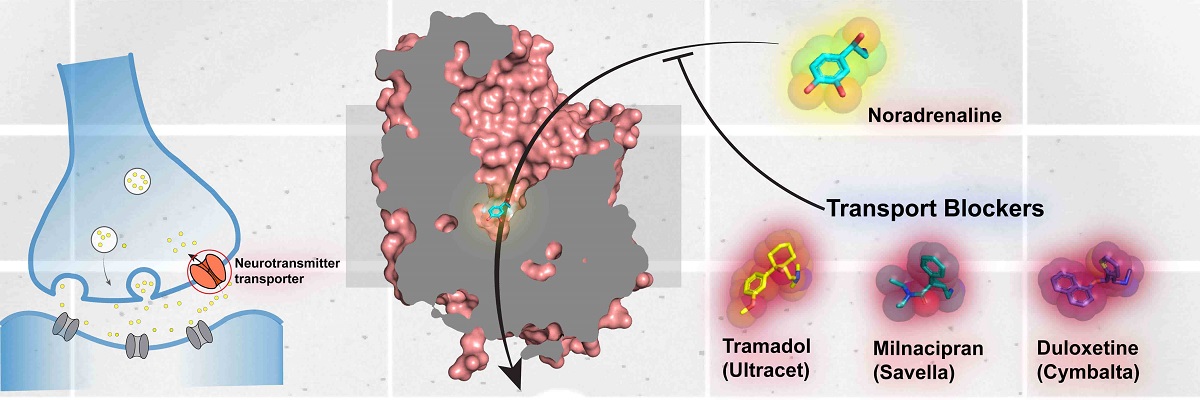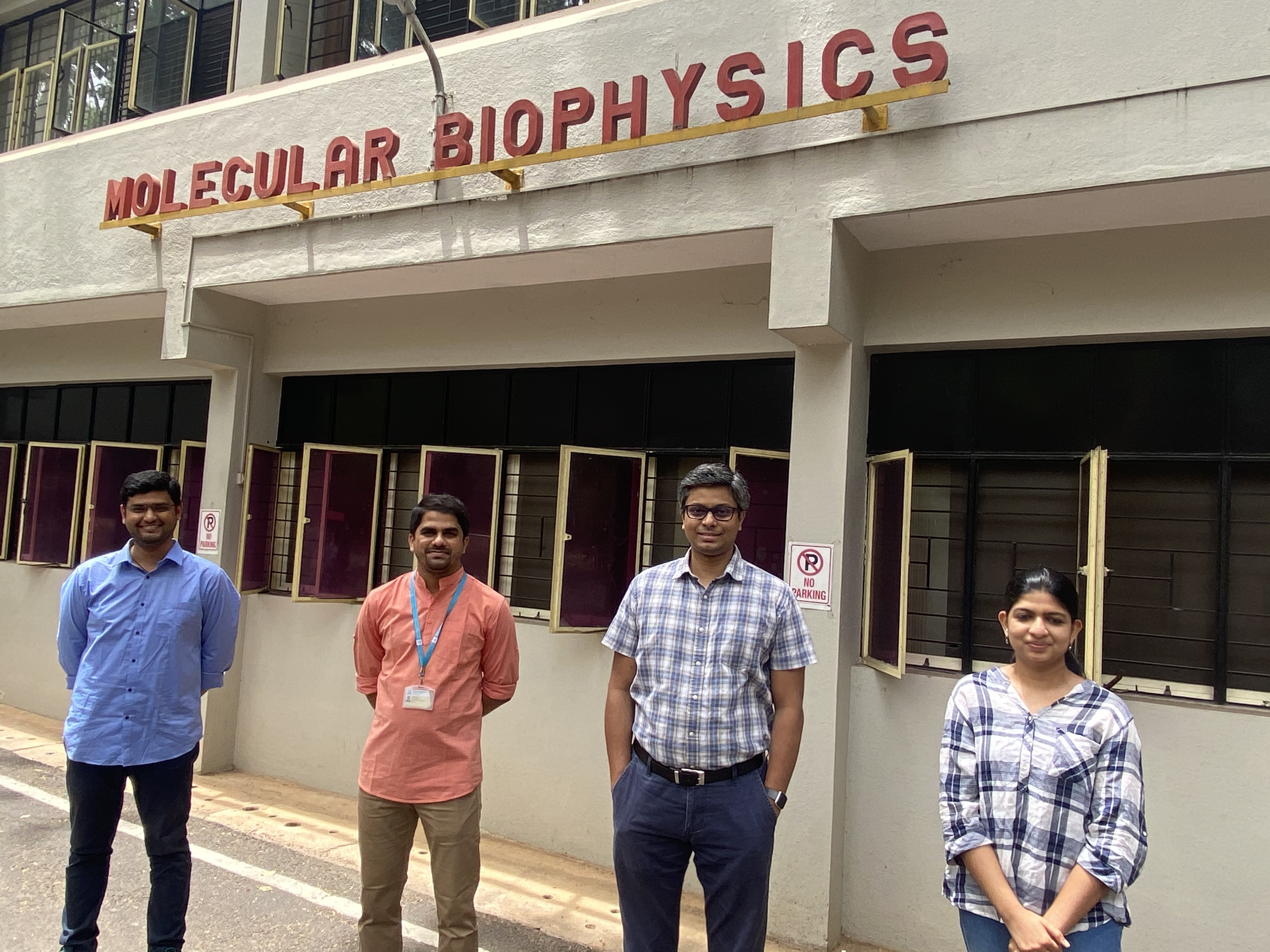How does chronic pain medication block noradrenaline transport?
 Communication between nerve cells (neurons) happens through the release of chemicals called neurotransmitters. One such neurotransmitter is noradrenaline (also known as norepinephrine), which is important in regulating alertness, arousal and pain sensation. Neurotransmitter levels within nerve cell junctions or synapses are controlled by a class of membrane-embedded transporter proteins. These transporters serve as molecular “vacuum cleaners” to remove excess neurotransmitters, thus regulating the extent of communication between neurons.
Communication between nerve cells (neurons) happens through the release of chemicals called neurotransmitters. One such neurotransmitter is noradrenaline (also known as norepinephrine), which is important in regulating alertness, arousal and pain sensation. Neurotransmitter levels within nerve cell junctions or synapses are controlled by a class of membrane-embedded transporter proteins. These transporters serve as molecular “vacuum cleaners” to remove excess neurotransmitters, thus regulating the extent of communication between neurons.
Release of noradrenaline in the spinal cord helps relieve chronic pain conditions like fibromyalgia and neuropathic pain. Increasing the levels of noradrenaline in synapses by blocking its transporter can reduce pain. Hence, drugs that block noradrenaline transport are prescribed as chronic pain medications. Some of the popularly prescribed blockers include duloxetine, milnacipran and tramadol which are commercially available as Cymbalta, Savella and Ultracet, respectively. Of these, duloxetine and milnacipran are prescribed to mitigate diabetic neuropathy and fibromyalgia. Tramadol is effective for post-operative pain and restless leg syndrome but can be addictive when used in high doses.
In a new study, researchers in the Molecular Biophysics Unit led by Aravind Penmatsa used X-ray crystallography to determine the structures of a neurotransmitter transporter to demonstrate how noradrenaline and dopamine – another neurotransmitter –display different types of interactions within the same transporter despite being chemically very similar. The distinct region within the transporter with which noradrenaline interacts is also the site where blockers duloxetine, milnacipran and tramadol bind and specifically block noradrenaline uptake. The team discovered that any alterations in this region severely compromise the drugs’ ability to block noradrenaline uptake. The findings provide a paradigm for designing improved inhibitors of noradrenaline transport with limited side-effects, to mitigate chronic pain.
Reference:
Shabareesh, P., Mallela, A.K., Joseph, D. & Penmatsa, A.* Structural basis of norepinephrine recognition and transport inhibition in neurotransmitter transporters. Nat. Communications. (2021) 12:2199. (DOI: https://doi.org/10.1038/s41467-021-22385-9)
Webpage:
https://aplabmbu.weebly.com/





 Communication between nerve cells (neurons) happens through the release of chemicals called neurotransmitters. One such neurotransmitter is noradrenaline (also known as norepinephrine), which is important in regulating alertness, arousal and pain sensation. Neurotransmitter levels within nerve cell junctions or synapses are controlled by a class of membrane-embedded transporter proteins. These transporters serve as molecular “vacuum cleaners” to remove excess neurotransmitters, thus regulating the extent of communication between neurons.
Communication between nerve cells (neurons) happens through the release of chemicals called neurotransmitters. One such neurotransmitter is noradrenaline (also known as norepinephrine), which is important in regulating alertness, arousal and pain sensation. Neurotransmitter levels within nerve cell junctions or synapses are controlled by a class of membrane-embedded transporter proteins. These transporters serve as molecular “vacuum cleaners” to remove excess neurotransmitters, thus regulating the extent of communication between neurons.